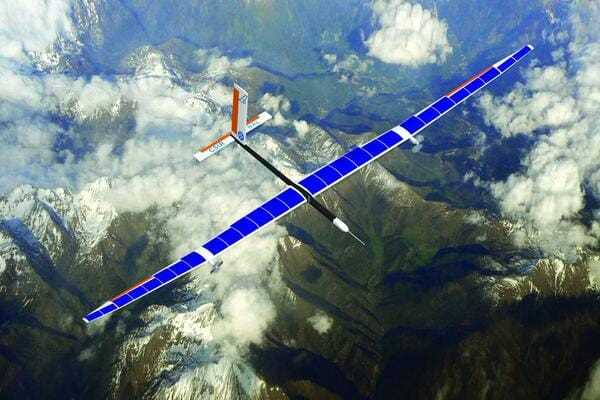With its major technological breakthrough, India is developing High-Altitude Pseudo-Satellite Vehicles (HAPS), identified as the new technologies that can massively transform satellite surveillance, monitoring, and disaster management capabilities. The recent successful test flight of a UAV prototype by the National Aerospace Laboratories (NAL) in Bengaluru was a remarkable milestone, implying that India is walking its way forward to enter the world market of this cutting-edge technology.
Understanding HAPS
High-altitude platforms such as High-Altitude Pseudo-Satellites (HAPS) fall under the category of aircraft that are designed to be run in the mid-stratosphere of 17 to 23 kilometers above the Earth's surface. This feature altitude results in a variety of benefits, such as stable flight as a result of low winds, an extensive coverage area, and a considerable endurance period. HAPS incorporates the use of solar energy for the duration of flight and puts them in an elevated state for about several months without the need for frequent replenishment or maintenance.
Addressing Existing Limitations
The emergence of HAPS reflects the fact that it can overcome the significant obstacles created for us by normal UAVs and satellites. Traditional drones have a limitation imposed by the life of their batteries and the operational period, but HAPS extends the parameters due to their reliance on solar power as well as the duration of their flights. Apart from that, HAPS constitute far better coverage capabilities than LEO satellites since, slowly, the latter fly around the ground. Geostationary satellites include restricting factors like the fact that they are expensive and it may be impossible to make them follow some actions after deployment. HAPS is the best of two worlds, it has continuous coverage of the whole area and the flexibility allows them to be deployed and rescheduled depending on the requested payload.
Some of the central benefits of HAPS technology are provided below:
1. Enhanced Coverage: HAPS can cover large areas with the love of up to 200 square kilometers and are exploited in two ways by many applications, among them security, disaster management, and environmental monitoring.
2. Flexibility and Adaptability: In contrast to the typical satellites which are relatively immobile and require redeploying or replacing to be able to respond to changes in the mission objectives and plans. HAPS can be easily moved or equipped with other systems once new operational objectives of the mission become necessary.
3. Cost-Effectiveness: HAPS brings an affordable alternative to the traditional set of orbital platforms. They provide continual coverage at a lesser price than geostationary satellites while sustaining their maneuverability and liberty of action.
Engineering Challenges and Solutions
The development of HAPS technology presents several engineering challenges that must be addressed to ensure successful deployment and operation: The development of HAPS technology presents several engineering challenges that must be addressed to ensure successful deployment and operation:
1. Solar Power Generation: The obstacle of solar power generation sufficient to cover the charging of the batteries, the powering of payloads, and the flight of the aircraft is the key problem. By designing advanced solar array techniques and using high-quality photovoltaic cells, this barrier has been addressed.
2. High Battery Density: Because the flight and hence space restrictions, the solar cells and batteries need to have a high power density to meet the power requirements onboard. The adoption of both battery technology and energy storage solutions for long-term journey implementation is one of the keys to success in space travel.
3. Design Stability: Conquering the dilemma of integrating light design criteria with healthy stability is one of the major problems. Along with Highly developed aerodynamic design and dynamics stabilization mechanisms play an important role in obtaining stable flights in the universal.
4. Temperature Regulation: The stratosphere, in which temperatures are decreasing to minus fifty degrees Celsius or less, is a place to carry out the missions and work of the satellites. Heating the phases, suitable for electronics and instruments, is fundamental. Thermal-engineering technologies that can flight system maintenance in heat-related issues and hence can offer reliable operation may be required.
5. Low Air Density: Overcoming the low-density air environment that affects lift production and speeds the engine, you will have to develop highly innovative propulsion systems, that meet the high-altitude atmospheric conditions.
Why does India Want to develop HAPS?
India deliberately chooses HAPS vehicles (also known as pseudo-satellites and space airships) for strategic objectives that incorporate defense departments, disaster management, and technological sovereignty. Experiencing a truly drastically growing country that has numerous geographical and security problems is the reason why India gives priority to sophisticated aerial surveillance as well as monitoring. The Indian government has employed the HAPS technology to reinforce the defense capabilities of Indian armed forces thereby creating a deeper understanding of the situation for its prolonged borders and strategic places. On top of this, HAPS implantation is of great weight for disaster management and humanitarian help to come into play by way of rapid response provision and real-time monitoring of the affected disaster areas.
India's policy of indigenous HAPS development, besides supporting its broader objectives of technological self-reliance and innovation, is likely to assist in reducing the dependency on foreign suppliers, and hence, India's strength on the global stage would be rooted in its navy aerospace technologies. Indian government pursues HAPS development under the leadership to consolidate strategic power, exercise reliable control over state security, and claim itself as the world aerospace technology leader.
Conclusion
India's ambition to acquire High-Altitude Pseudo-Satellite Vehicles (HAPS) may mean an enormous advancement in the aerospace campaign and tactical skills realm. The performance of a UAV and NAL prototype in a test flight demonstrated the ability of India to compete in the global arena by implementing this game-changing novelty. In this regard, the introduction of HAPS avails India the cutting-edge technologies that replace the limitations of what the traditional UAVs and satellites can do. These improvements include providing the best surveillance, monitoring, and disaster management systems, thus enabling India to lead the way in aerospace technology and strategy.




Leave Comment